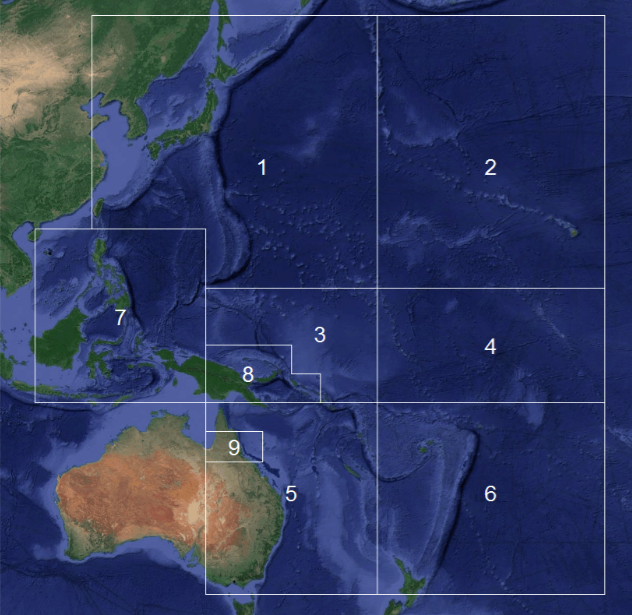At its meeting last month in Busan, Korea, the Scientific Committee of the Western and Central Pacific Fisheries Commission determined for the second year in a row that the region’s bigeye tuna stock is neither overfished nor subject to overfishing — good news for an organization that has been struggling to rein in overfishing of the highly prized fish for the last decade.
The commission’s member countries were estimated to have caught 126,929 metric tons of bigeye in the region last year, a 17 percent decrease from 2016 and a 19 percent decrease from the 2012-2016 average, a committee report states.
The drop comes from all sectors. Longliners caught eight percent less than they did in 2016. For purse seiners, it was 12 percent less. Pole and line catches decreased by 65 percent and catch by other gear declined by 48 percent.
Given these numbers, the committee found — with greater certainty than it did last year — that there was an extremely low chance (six percent) that overfishing was occurring. Last year was the first time the committee used new growth models in its bigeye stock assessment and there was considerable uncertainty among some member countries surrounding its use.
Despite the generally rosy report this year, the committee found that in the tropical regions south of Hawai`i, depletion of bigeye was higher, with the catch being composed of an especially large proportion of juvenile bigeye.
It recommended that when the commission meets in Honolulu in December that members consider measures to reduce juvenile take “with the goal to increase bigeye fishery yields and reduce any further impacts on the spawning biomass for this stock in the tropical regions,” the report stated. Any such measure would most likely target purse seiners, since they are responsible for most of the juvenile haul.
What’s more, even though the stock is not in an overfished state or being overfished, the committee recommended against the commission increasing allowable catch above the 2012-2015 average, given the high uncertainty surrounding bigeye recruitment in the long term.
“Under the scenario assuming long-term average recruitment continues into the future there was a high risk (18-32 percent) of breaching the LRPs [limit reference points] and a zero probability of achieving the objective of [Conservation Management Measure] 2017-01, while under the scenario which assumes higher more recent recruitment continues into the future, there was a low risk (0-5 percent) of breaching the LRPs and a 100 percent probability of achieving the objective of CMM 2017-01,” the report states.
Although not unexpected, that recommendation is not likely to sit well with Hawai`i longliners, who in recent years have consistently reached the catch limits set by the commission for the United States. The fishery has been able to extend its fishing year by purchasing quota from American Samoa, Guam, and the Commonwealth of the Northern Mariana Islands for hundreds of thousands of dollars.
This year, despite being shut out of a large swath of its fishing grounds around the Main Hawaiian islands in July due to excessive false killer whale hookings, the Hawai`i deep-set longline fleet had already caught 82 percent of its 3,554 metric ton annual limit by August 22.
— Teresa Dawson
For Further Reading
Environment Hawai`i has written extensively on WCPFC’s efforts to prop up the bigeye tuna stock. Below is a brief list of our most recent articles, available at www.environment-hawaii.org:
- “Council Shies Away From Expansion Of Territorial Bigeye Quota Transfers,” April 2018;
- “Council Seeks to Nearly Double Annual Bigeye Tuna Quota,” November 2017;
- “New Stock Assessment Models Suggest Bigeye Tuna May No Longer Be Overfished,” October 2017;
- “Fisheries Council Maintains Status Quo For Territorial Bigeye Quota Transfers,” November 2016.


Leave a Reply